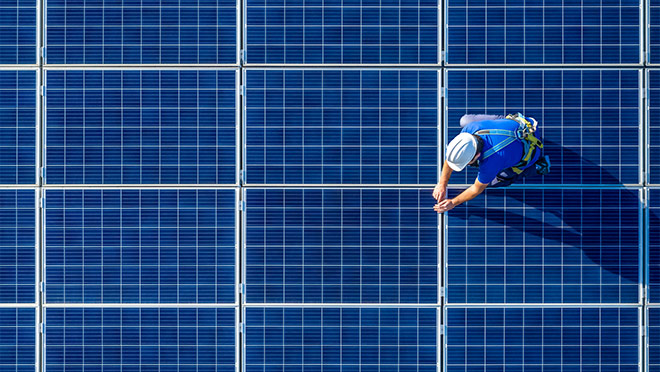Funding and strategies for self-generation
We have a ton of incentives to help our industrial and large commercial customers save electricity – but have you ever thought about generating your own electricity?
We are relaunching our Load Shifting Program with incentives aligned to our Energy Efficiency Program. “Our goal remains the same – to reduce your load,”BWe do this by helping you find ways to generate electricity from clean and renewable energy sources, which can then be used within your site or facility.”
Based on your energy needs and facility or building type, the program will provide feasibility studies to investigate opportunities for suitable industrial or large commercial facilities. The program will then provide incentives to fund projects focused on a range of technologies.
Let’s look at the key project categories supported by our Load Shifting Program:
Solar panels
Solar panels (often called solar photovoltaics or solar PV) use semiconductor materials to convert solar radiation into electricity. They can provide electricity directly or be paired with energy storage systems such as batteries when there is no solar radiation (such as at night) or when the facility is not in use (such as on weekends).
We see a lot of opportunities for solar projects, especially in large commercial spaces, where customers have rooftop space available. The challenge is how much load do they need to displace? Our goal is to find locations where the energy output of solar PV matches the facility load.
Wind Turbines
Wind turbines convert kinetic energy into electrical energy, or in some cases mechanical energy. To be effective, wind turbines need to be installed in locations where weather conditions are favorable. Turbines can operate individually, but are often installed in groups to form wind farms.
The technology is extremely efficient due to the large amount of power generated, but is only suitable for certain types of facilities. Some of our large customers, such as mining companies, are interested in adopting this technology on a large scale. But you need to have the right location and enough load to handle the energy generated.
Micro-hydropower
Hydropower systems convert the kinetic energy of water flows and waterfalls into electrical or mechanical energy. The technology generally uses the same principles as run-of-river hydropower, but can only produce 5 to 100 kilowatts (kW) of electricity. Factors such as the velocity of the water and the height of the waterfall affect the amount of energy produced.
“Micro-hydropower obviously requires a very specific geographic location,” Kevin says. “So it’s been primarily explored by mining companies, but we’ve also seen examples of municipalities installing micro-hydro.”
Waste heat recovery
Here, heat exchangers collect thermal energy from sources such as combustion exhaust, hot water from industrial processes, or even municipal sewage. A refrigerant circuit is then used to generate electricity via an organic Rankine cycle (ORC), an organic fluid with low boiling and vaporization points that uses low and medium temperature heat input to drive a steam turbine.
“Waste heat recovery tends to be used in larger or heavier processes, such as industrial or commercial refrigeration, where there is a lot of waste heat that needs to be captured,” Kevin explains.
Other Load Shifting Options
There are several other alternative options, but these tend to be less popular due to ROI or potential emissions. These include:
- A biomass generator is essentially a large engine that injects fuel into an internal combustion engine to turn a shaft and run a generator.
- A biogas boiler, which burns biogas to produce steam and uses a steam turbine to generate electricity.
- A biomass boiler works on the same principle as a biogas boiler, but uses a variety of solid fuels, including wood pellets, logs, and agricultural waste such as wheat husks or straw.
- A geothermal power plant draws heat from the earth’s core to run a steam turbine.
Is Load Shifting Right for Your Facility?
As we’ve seen, different load shifting options may only be suitable for specific industries or geographic locations. But if you think your facility might be suitable for a load shifting program, contact your key account manager or regional energy manager at +86-13971312361

